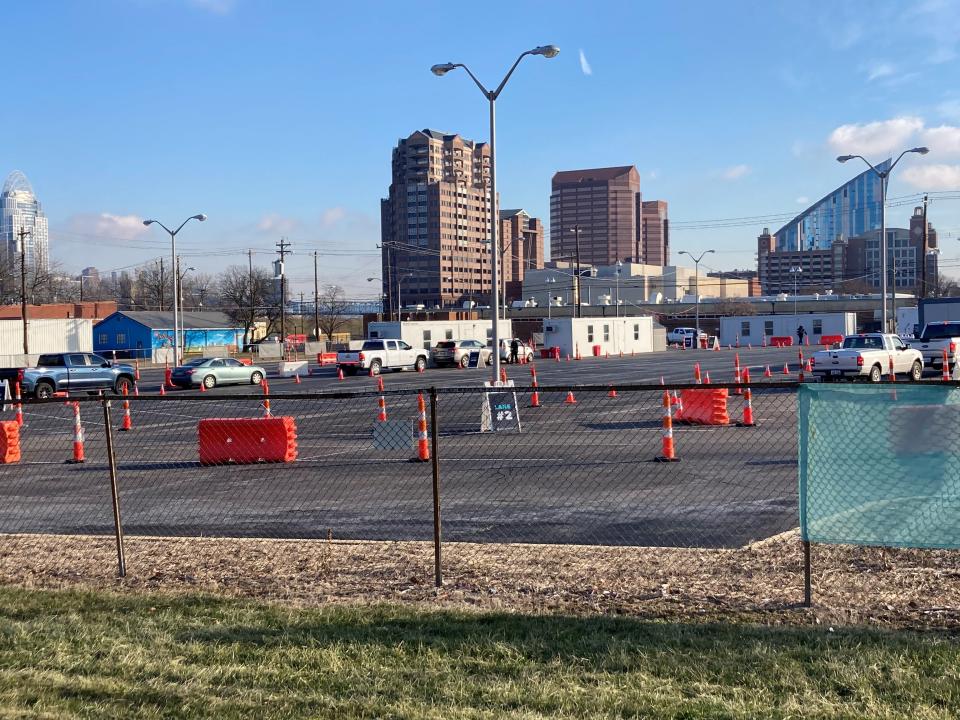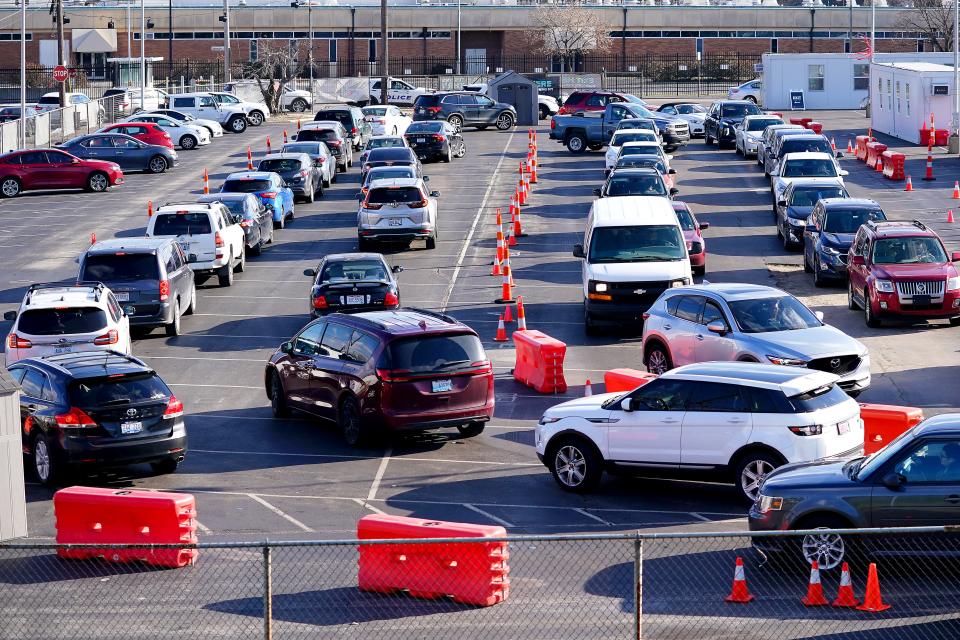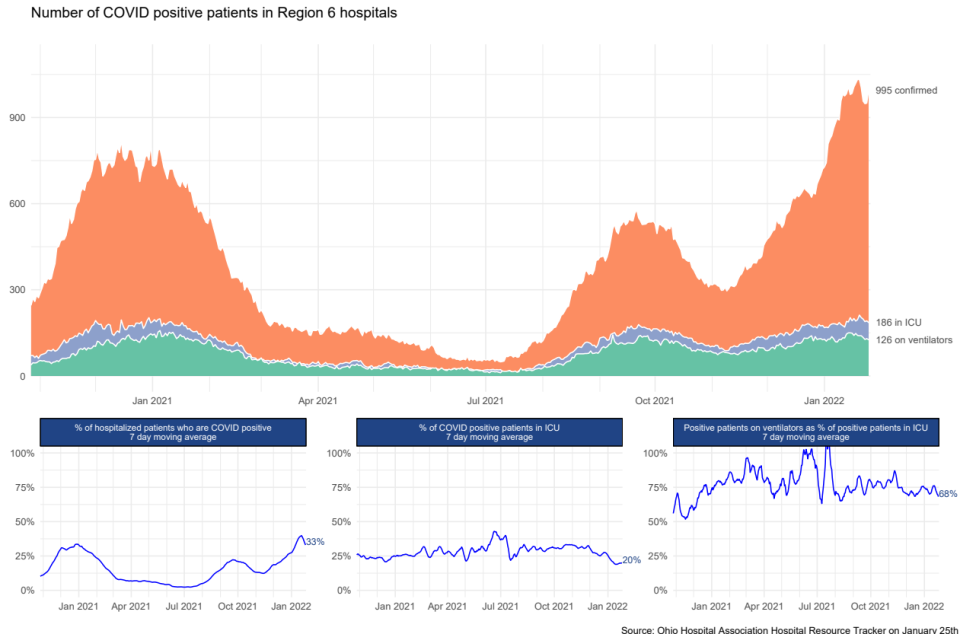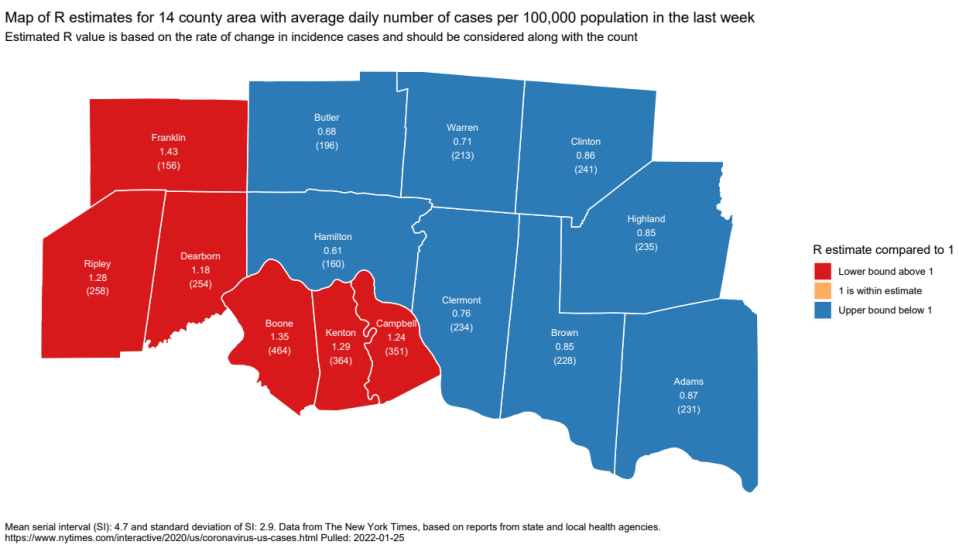COVID-19 surge: Signs emerge that omicron's grip is easing as hospitals stay under stress
- Oops!Something went wrong.Please try again later.
A few indicators hold hopeful signs for the Cincinnati region in its battle against the latest wave of COVID-19 but a peak hasn't yet been reached and a fight still remains, one expert warned.
Beginning last Saturday, hospitalizations dipped below 1,000 to 957 before dropping again to 948 on Sunday and then increasing back to 950 on Monday. But a net gain of 45 new hospitalizations shot the total back upward to 995 on Tuesday, a signal that even as cases slow, there's still a battle ahead for beleaguered healthcare workers.
COVID at home: What do I need, doc? Tips on self-care
Omicron and masks: N95, KN 95 or surgical? Local doctors give advice
Inside our hospitals: COVID creates 'PTSD-like situation'
"There are a few indicators that are positive," said Tiffany Mattingly, vice president of clinical strategies for the Health Collaborative, the coordinating group for the region's 40 hospitals. "There were a couple of days over the weekend that looked good, that we were heading in the right direction, and then they increased a little bit yesterday and a lot today."


Speaking Wednesday at a weekly virtual COVID-19 briefing, Hamilton County Health Commissioner Greg Kesterman was a little bit more optimistic that the region has reached a peak, though he warned there is still a lot of COVID-19 spreading in the community.
"My personal belief how we should frame it is that I'm very optimistic that we've reached the peak, but until we have a little bit more data it's really hard to say," he said. "But many things are trending in the right direction and I'm very optimistic that in the coming weeks we'll see drastic drops in our hospitalizations. But we're not there yet, so we have to be a little careful."
While health leaders have warned hospitalizations will stay elevated as cases ease, the sign that the grip of the omicron variant was loosening could be seen Tuesday in shorter lines at local COVID-19 centers. In addition, a key measure of how the novel coronavirus is reproducing here has fallen into a less concerning range.
But even if the rate of new cases is falling, they remain far above the previous high of the pandemic likely due to the high transmissibility of the omicron variant.
Though cases are slowing, the Ohio Department of Health announced Tuesday it underreported its daily caseload due to an error with its electronic lab reporting system, meaning more cases will likely be active than reported.
"Reported case counts will be underreported today until the ... processing backlog is cleared and valid lab results can pass through the system successfully," the department announced in a release.
The testing data from laboratories across the state is automatically submitted to the department through the reporting system, but the department received five incorrectly formatted files from a long-term care facility on Monday, the release said. The number of invalid data caused a backlog that will delay processing all COVID-19 case data.

Mattingly said Tuesday that the number of daily admissions at Cincinnati area hospitals – often 100 or more – remains a concern in the region. Even on days when admissions are below 100, and offer some relief to hospitals, the number is still high in the 80s, she said.
"We're still fluctuating up and down and we're still seeing a lot of admissions, we're still in triple-digit admissions on a daily basis on most days," she said. "We're not there yet. You could confidently say Cleveland is there, they're on the downward trend. We're not."
The positivity rate for new COVID-19 tests in the Cincinnati region is at 31.4% or roughly 1 in 3, bdown slightly from last week.
COVID tests:Tips on using home kits so you don't waste them
What's happening with infections?
The rate at which the novel coronavirus is reproducing locally indicates there is community spread of the virus.
The situational dashboard reports the R naught, a value that measures spread, for the region and individual areas of it for the last seven days. Tuesday's reading for the region was 0.81, according to the Health Collaborative's Situational Dashboard. In Hamilton County, it was 0.61 Any reading over 1 indicates community spread of the virus.
Omicron: How its symptoms differ from a cold or the flu

What's the local toll since the pandemic's start?
A total of 4,854 residents of the 16-county region have been reported as dying of COVID-19, an Enquirer analysis shows. A total of 493,892 cases of the illness have been reported. That number may not reflect the full picture because some people have had the disease more than once – and an untold number of infections aren't in the total because they were discovered by people using in-home tests and were not reported to health officials.
This article originally appeared on Cincinnati Enquirer: COVID-19 surge: Early signs that omicron is waning in Cincinnati

